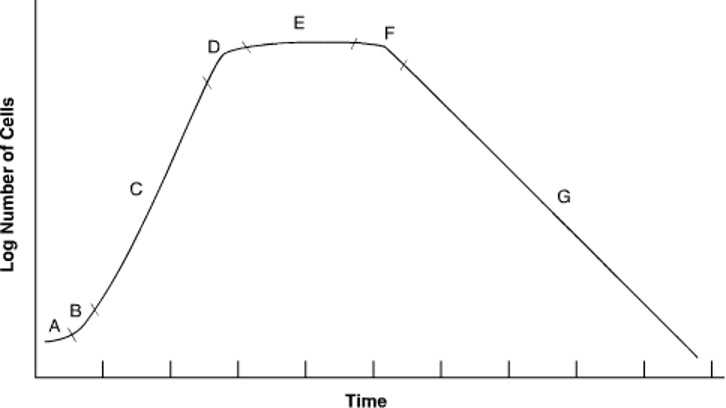If you’re preparing for the United States Medical Licensing Examination® (USMLE®) Step 1 exam, you might want to know which questions are most often missed by test-prep takers. Check out this example from Kaplan Medical, and read an expert explanation of the answer. Also check out all posts in this series.
A 6-year-old girl is brought to the physician by her parents because of a severe sore throat. Her temperature is 38.9 ºC (102.0 ºF). Physical examination shows an erythematous posterior oropharynx with obvious abscesses on the tonsillar pillars. A rapid antigen test for Streptococcus pyogenes is positive.
The drug of choice for this infection will have greatest efficacy at which of the following stages shown in the diagram?
A. Letter A.
B. Letter B.
C. Letter C.
D. Letter D.
E. Letter E.
F. Letter F.
G. Letter G.
Subscribe and succeed in medical school
Get tips and insider advice from the AMA on succeeding in medical school—delivered to your inbox.
The correct answer is C.
Kaplan Medical explains why
Kaplan Medical explains why
This patient has pharyngitis caused by Streptococcus pyogenes (Group A Streptococcus). In the absence of drug allergy, beta lactam drugs such as penicillins and cephalosporins are the drugs of choice for uncomplicated S. pyogenes infections. Macrolides may be used in beta-lactam allergic patients. Beta-lactam drugs act by inhibiting cell wall synthesis.
In the bacterial growth curve, rapid exponential growth occurs during the log (or logarithmic growth) phase. In a bacterial culture, cell wall synthesis and optimal cell growth will occur at a maximal rate during the period of exponential growth, which is marked on the graph above with the letter C; cells will be maximally susceptible to most antibiotics.
Why the other answers are wrong
Why the other answers are wrong
Choice A: The lag phase is the initial phase of a bacterial culture during which there is no increase in cell number. Cells in a culture at this stage are activating enzymes necessary for metabolism but are not undergoing cell wall synthesis.





